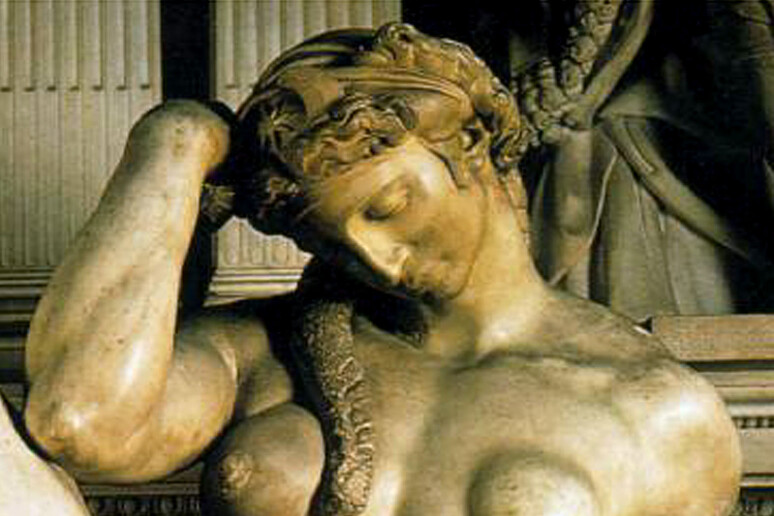Michelangelo carved pagan symbols of
the female sex organs in the Medici Chapels in Florence just as
he painted them in the Sistine Chapel in the Vatican, a team
from Brazil's Porto Alegre University say in a new study.
Skulls, shells and spheres evoke the shapes of the uterus and
Fallopian tubes, the team led by Deivis de Campos said - the
same group that a few months ago found similar allegedly
anatomical symbols in the Sistine Chapel, as tokens of female
power in a Church that held them back.
The new study focuses on three symbols carved beside the
tombs of Giuliano and Lorenzo dei Medici: skulls of cattle and
rams, spheres connected by cords, and a shell.
According to the Brazilian experts, their shape is a coded
reference to that of the uterus and the Fallopian tubes, organs
of female reproduction.
The Renaissance genius inserted them into his work with the
intention of "representing the capacity for rebirth and
regeneration between life and death," said the team.
"The hypothesis, suggestive but perhaps a little forced,
could confirm yet again Michelangelo's great interest in human
anatomy," the Brazilians said.
Plastic surgeon Davide Lazzeri, who has been working on
medicine in art for many years, recalled that the artist, as a
youth, "started to examine corpses surreptitiously, in the
basilica of Santo Spirito, in order to represent the human body
in the most realistic way possible in his work".
In September de Campos and his team reported that
Michelangelo hid coded messages about pagan notions of female
sexuality within the ceiling of the Sistine Chapel.
ALL RIGHTS RESERVED © Copyright ANSA











